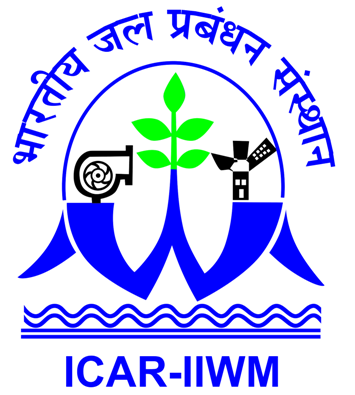i. Increasing water use efficiency by at least 5% under selected major canal command areas
A large number of agricultural water management technologies have been standardised for different agro-ecological regions in on-station conditions for canal and tube well command areas which need to be upscaled in participatory mode. Convergence will be made with CADA and agricultural department of respective state Governments for participatory upscaling of the technologies which would ensure in improving irrigation application efficiency.
ii. Sensor based irrigation application and real time data management
Precision farming, Variable Rate Technology (VRT), smart agriculture, and site-specific crop management taking into account availability of moisture would improve water use efficiency/ water productivity. Early warning system of deficit moisture and precision irrigation application would be aimed under different sources of irrigation. Radio satellite, mobile phones, sensors, internet-based communication, and microcontroller capture the ecological parameters such as soil moisture, temperature, humidity, and light intensity. Irrigation scheduling would be done as per real-time data available through sensors.
iii. Stream revival and their effective utilization in hilly regions of India
About 50 per cent of the springs have dried up or turned seasonal, says the “Report of Working Group I Inventory and Revival of Springs in the Himalayas for Water Security”. Perennial streams in hills are drying up and affecting hill agriculture due to geo morphological, climatic and human interference. Four centres of AICRP on IWM i.e Almora, Jammu, Palampur and Shillong are being engaged in developing a coordinated project proposal for reviving the drying springs in hills and improving the conveyance and application efficiency of spring waters for improving water productivity.
iv. Mapping of groundwater potential zone and identification of sites for groundwater recharge
Generating groundwater potential maps have a significant role to enhance sustainable management of groundwater resources in the country. Most groundwater potential investigation techniques (i.e., geophysical methods, ground-based survey, and exploratory drilling) are uneconomical and time-consuming and require large data sets. However, an integrated GIS and remote sensing study can provide the appropriate platform for the convergent analysis of large volumes of data and quite decision-making techniques for groundwater exploration. Seven centres of AICRP on Irrigation Water Management would work in application of modern tools in identifying groundwater potential zones in different major river basins and identify sites for groundwater recharge.
v. Development of fertigation methods and schedules for high valued crops
Twelve centres of AICRP on IWM are working on developing economic fertigation schedules for different crops and cropping sequences. The use of liquid fertiliser is gaining popularity under pressurised irrigation system. Appropriate irrigation and fertigation scheduling for high valued crops would make the system economical for adoption of enterprising farmers.
vi. Economic layout of pressurised irrigation system for different crop and cropping system
Design of pressurised irrigation system for its economic use is a challenge especially for resource poor farmers of India. Application of pressurised irrigation system in single crop sometimes becomes uneconomical and farmers lose interest in its adoption. Design based on cropping system and sequence would make the pressurized irrigation system economical for different size class of farmers for its wider adoption.
vii. Conjunctive use strategy by linking simulation model with optimization model for different irrigation command areas across the country
The surface water and groundwater resources of India are finite and scope for increasing water supplies is limited. There is a likelihood of further reduction in surface water supplies due to capacity losses of the reservoirs, which is because of siltation, drought and huge conveyance losses. Due to the inadequacy, variability and unreliability of the surface irrigation supplies, the farmers have turned more and more towards the use of groundwater to meet their crop water requirements. In areas like Punjab and Haryana the excess use of groundwater has led to salinization and sodicity. Strategies would be made for appropriate use of groundwater and surface water in command areas for sustainable use of water resources.
viii. Safe reuse of urban and peri-urban municipal wastewater in agriculture and floriculture
A large quantity of waste water is being generated from urban and peri-urban areas. This poor-quality water needs to be reused for agriculture and floriculture after proper treatment. Hence studies on reuse of urban and peri-urban municipal wastewater would be taken up for safe use in agriculture and floriculture activities.

